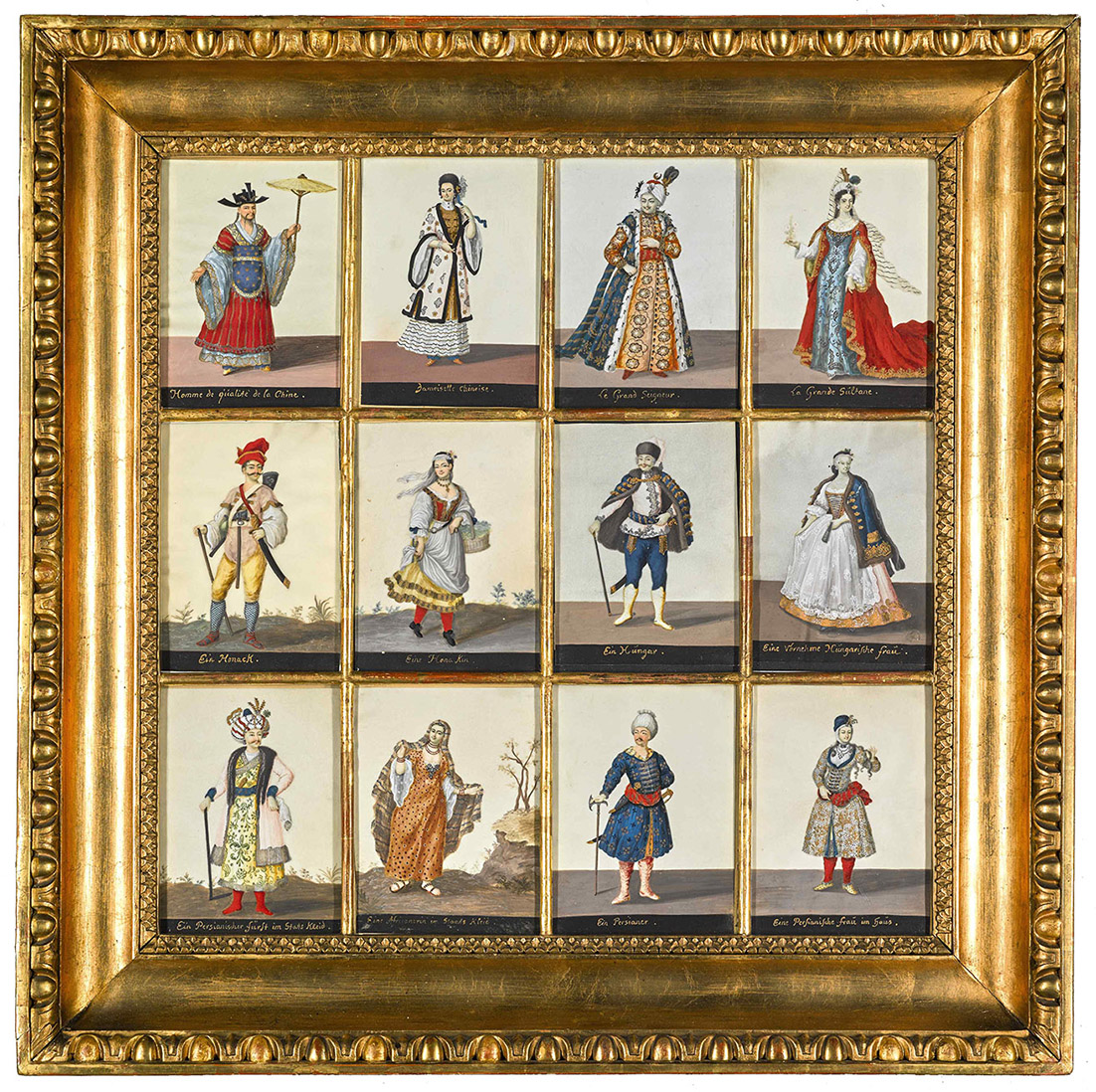The spring Islamic sales are viewing this weekend in Bond Street and elsewhere in London. These wonderfully graphic, almost sensual, velvet panels are tipped to break records at Sotheby’s on April 26 and are just some of the exceptional Ottoman and Turquerie wares on show.

Even if you don't intend to push the boat out, the sales are an unmissable opportunity to get close to otherwise untouchable treasures such as this shimmering velvet çatma at Sotheby’s (see below) before they disappear into well-guarded museum vitrines.

Le Grand Seigner is one of a dozen early-18th-century costume miniatures, set in a charming gilded frame (Sotheby’s, April 26, lot 138, est £60,000–80,00). They belong to the Cesky Krumlov castle series of costume potraits, assembled by the highly cultured Princess Maria Ernestine von Eggenberg and her heir and nephew Prince Adam Franz von Schwarzenberg. An inventory made at the time of Schwazenberg’s death in 1733, mentions 93 of these portraits in painted black frames (visible below under each portrait). They are exquisitely executed on vellum in gouache, heightened with silver and gold paint.
 Le Grand Seigneur and La Grande Sultane (top right) are based on engravings by Nicolas Bonnart (c1638–1715), and recall the theatrical Ottoman fashions at the court of the Elector of Saxony in neighbouring Dresden, who maintained a regiment of Saxon Janissaries and liked to receive guests dressed as Süleyman the Magnificent. Princess Maria Ernestine von Eggenberg and her husband Prince Johann Christian contructed a theatre at Cesky Krumlov and were famed for their richly costumed entertainments.
Le Grand Seigneur and La Grande Sultane (top right) are based on engravings by Nicolas Bonnart (c1638–1715), and recall the theatrical Ottoman fashions at the court of the Elector of Saxony in neighbouring Dresden, who maintained a regiment of Saxon Janissaries and liked to receive guests dressed as Süleyman the Magnificent. Princess Maria Ernestine von Eggenberg and her husband Prince Johann Christian contructed a theatre at Cesky Krumlov and were famed for their richly costumed entertainments.

This Ottoman kemha (brocade) panel belonged to the grande dame Agine Benaki Salvago, sister of Anthony Benaki, founder of the Benaki Museum. The consevative estimate is £30,000–40,000. Alexandria at the turn of the 20th century produced a flurry of collector cotton millionaires. This was the world vividly evoked in the writings Laurence Durrell, EM Forster and Cavafy. Agine Benaki’s marriage to Michael Salvago, whose family founded the National Bank of Egypt, sealed a whopping great business alliance. The two families’ art collections would feature prominently in Exposition d’Art Musulman, a seminel exhibition in Alexandria organised in 1925 by the Society of Les Amis de l’Art. But the event, admiringly covered in the Burlington Magazine, turned out to be the swansong of Alexandria’s heyday. In 1927, Anthony Benaki, Agine's brother, left Alexandria for Athens with ‘the lion’s share’ of the family collection, donating it, along with the family house in Athens, to the Greek state in 1931. The Benaki Museum of Islamic Art is still one of the world’s shrines to connoisseurship.

Sotheby’s have produced this fascinating photograph of the Salvago Villa in Alexandria (today the Russian Centre for Culture and Science), which shows how these exquisite Ottoman panels were hung on the walls like paintings.

One of the stars of the current sale, an early-17th-century voided velvet çatma panel (Lot 140), can be seen over the fireplace, above the Iznik plates on the mantelpiece. From Bursa or Istanbul, it measures 157cm by 116cm and is covered with bold carnation palmettes (est £40,000–60,000). Agine Benaki Salvago would bequeath part of her share of the inheritance to her brother’s museum, including her Persian antique jewellery, but this and other courtly Ottoman texiles remained in the family apartment in Paris, where they hung in a darkened room for much of the 20th century unseen and unknown.

The most highly valued of the collecion (Lot 139, est £200,000–300,000) is this çintamani çatma (voided silk velvet and metal thread) panel measuring 162cm by 120cm and dated to the late 16th or early 17th century.

Lot 240, though not from the Benaki-Salvago collection, is very much of the era of the Alexandria cotton millionnaires: an Ottoman brooch, circa 1900, set with gems and the tuğra of Sultan Abdülamid II (est £30,000–40,000).

There is a decent showing of Iznik pottery at both Sotheby’s and Christie’s but do look out for this wild thing at Christie’s: a dish bearing an amazing tree of life, 1525–35, from the collection of Fernand Adda, yet another cotton millionnaire from Alexandria (Lot 156, est £140,000–180,000).